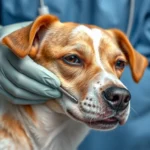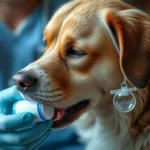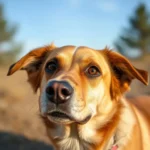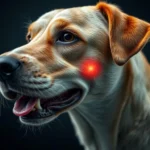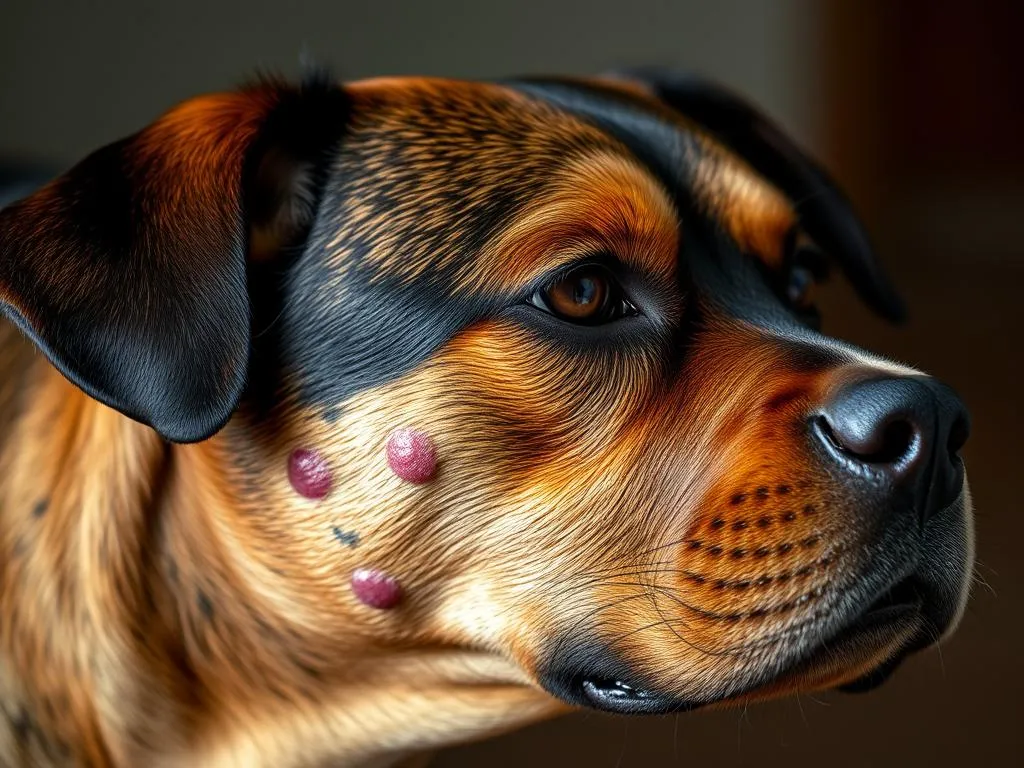
Introduction
As a dog owner, noticing lumps and bumps on your dog’s skin can be concerning. The skin is not only the largest organ of your dog’s body but also serves as a protective barrier, regulating temperature and preventing infections. Understanding what these bumps might mean is crucial for your pet’s overall health and well-being.
Statistics show that skin issues are among the most common problems reported by dog owners, with a significant percentage of dogs experiencing some form of skin condition in their lifetime. This article will delve into the various causes of lumps and bumps on your dog’s skin and guide you on when to seek veterinary advice.
Understanding Lumps and Bumps on a Dog’s Skin
When it comes to lumps and bumps on a dog’s skin, understanding the terminology can be helpful. Here are some common terms and definitions:
Common Terms and Definitions
- Nodules: Solid masses of tissue that can be found in various forms.
- Cysts: Fluid-filled sacs that can develop under the skin.
- Tumors: Abnormal growths that can be benign (non-cancerous) or malignant (cancerous).
Types of Lumps and Bumps
Benign Growths
- Lipomas: These are soft, fatty tumors that are generally harmless and painless, often found in older dogs.
- Sebaceous Cysts: These occur when sebaceous glands become blocked, forming a lump filled with oil.
Malignant Growths
- Mast Cell Tumors: A type of cancer that can appear as a lump and may require immediate veterinary intervention.
- Squamous Cell Carcinoma: A form of skin cancer that can also present as a bump on the skin, often associated with sun exposure.
Infectious Causes
- Abscesses: These can develop from bites or infections, resulting in swollen, painful lumps.
- Fungal Infections: Conditions like ringworm can cause bumps and lesions on the skin.
Allergic Reactions
- Hives and Urticaria: Allergic reactions can lead to raised bumps on the skin, often accompanied by itching.
- Contact Dermatitis: Irritation from chemicals or allergens can cause skin inflammation and bumps.
Identifying Symptoms and Signs
Visual Inspection
When checking for lumps and bumps on your dog’s skin, look for any changes in size, shape, or color. Here’s how to conduct a thorough examination:
- Check the entire body: Focus on areas where lumps are typically found, such as the neck, underarms, and belly.
- Feel for differences: Gently press on the bumps to assess their texture and mobility.
Associated Symptoms
Keep an eye out for any accompanying symptoms, which may indicate a more serious issue:
- Itching and Scratching: Persistent scratching can indicate irritation or infection.
- Hair Loss: Bumps may cause localized hair loss around the affected area.
- Behavioral Changes: If your dog seems restless, anxious, or in pain, this could be a sign that something is wrong.
When to Contact Your Veterinarian
Red Flags
Not all lumps and bumps require immediate veterinary care, but certain signs should prompt you to seek advice:
- Rapid Growth of Lumps: If you notice a lump growing quickly, it’s time to consult your vet.
- Presence of Multiple Lumps: A sudden appearance of several lumps should not be ignored.
- Persistent Scratching or Licking: If your dog cannot stop scratching or licking the area, it may indicate discomfort or an underlying issue.
Routine Check-ups vs. Urgent Care
Understanding the difference between routine skin checks and urgent care can help you decide when to visit the vet:
- Routine Check-ups: Regular examinations are essential for early detection of skin issues.
- Urgent Care: If your dog shows signs of distress, such as excessive bleeding or signs of infection (swelling, heat, or pus), immediate veterinary attention is necessary.
Diagnostic Procedures by Vets
When you take your dog to the vet, the following diagnostic procedures may be performed to determine the cause of the lumps and bumps on your dog’s skin:
Skin Exams and Histopathology
Your veterinarian will conduct a thorough skin examination to evaluate the lumps. In some cases, they may recommend a histopathological analysis to identify the nature of the growths.
Diagnostic Tests
- Fine Needle Aspirate (FNA): This involves using a thin needle to extract cells from the lump for examination.
- Biopsy: If the lump appears suspicious, a biopsy may be necessary to determine if it is cancerous.
- Blood Tests and Imaging: Depending on the situation, blood tests and imaging techniques like X-rays may be required for a comprehensive assessment.
Treatment Options
Benign Growths
For benign growths, treatment may involve:
- Monitoring: If the growths are not causing discomfort or health issues, your vet may recommend regular monitoring.
- Surgical Removal: If a lipoma or cyst becomes bothersome or grows significantly, surgical removal may be necessary.
Malignant Growths
In the case of malignant growths, treatment options may include:
- Surgery: Removal of the tumor is often the first line of treatment.
- Chemotherapy or Radiation: Depending on the type of cancer and its stage, additional treatments such as chemotherapy or radiation may be required.
- Palliative Care: For advanced cases, focusing on comfort and quality of life may be the best approach.
Infection and Allergic Reactions
For infections and allergic reactions, treatment may involve:
- Antibiotics and Antifungals: To combat bacterial or fungal infections, your veterinarian may prescribe medications.
- Antihistamines and Steroids: These can help manage allergic reactions and reduce inflammation.
Home Care and Management
At-Home Monitoring
Keep track of any changes in your dog’s skin condition by maintaining a skin diary. Record the following:
- Date and time of observations
- Changes in lump size, shape, or color
- Associated symptoms such as itching or discomfort
Preventive Measures
To promote skin health and prevent lumps and bumps, consider these preventive measures:
- Regular Grooming: Routine brushing and bathing can help keep your dog’s skin healthy and free from irritants.
- Dietary Considerations: A balanced diet rich in essential fatty acids can support skin health and reduce the likelihood of allergic reactions.
Frequently Asked Questions
What if my dog has multiple lumps?
If your dog has multiple lumps, especially if they are new or changing, it’s crucial to consult your veterinarian. Multiple lumps can indicate a systemic issue or an allergic reaction that needs to be addressed.
Are there any home remedies for skin bumps?
While some home remedies may provide temporary relief for minor irritations, it’s essential to consult your vet before attempting any treatments. They can recommend safe and effective options tailored to your dog’s specific condition.
How can I prevent lumps and bumps from forming?
Regular grooming, maintaining a healthy diet, and avoiding known allergens are effective ways to help prevent the formation of lumps and bumps on your dog’s skin.
What is the cost of veterinary treatments for skin issues?
The cost of veterinary treatments can vary widely based on the diagnosis and required treatments. Routine examinations may be affordable, while surgical interventions or advanced diagnostics can be more expensive. Discussing potential costs with your veterinarian beforehand can help manage expectations.
Conclusion
Being vigilant about your dog’s skin health is crucial for early detection and treatment of potential issues. If you notice any lumps and bumps on your dog’s skin, don’t hesitate to consult your veterinarian for a thorough evaluation. Your dog’s well-being is worth the extra peace of mind.
Take comfort in knowing that skin issues can often be managed effectively with proper care and attention. By staying informed and proactive, you can help ensure a happy and healthy life for your furry friend.

